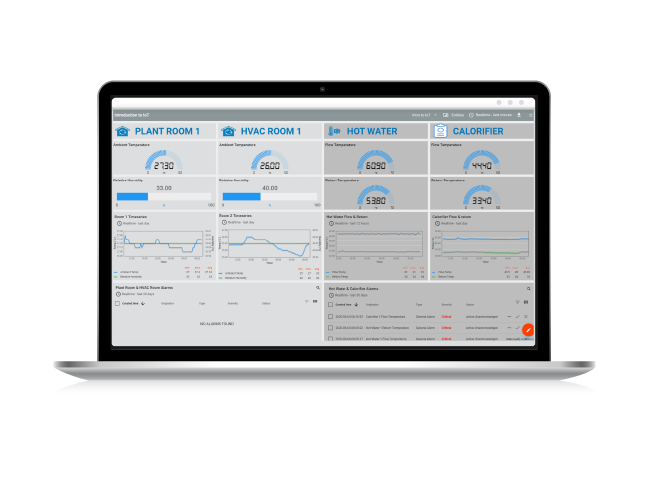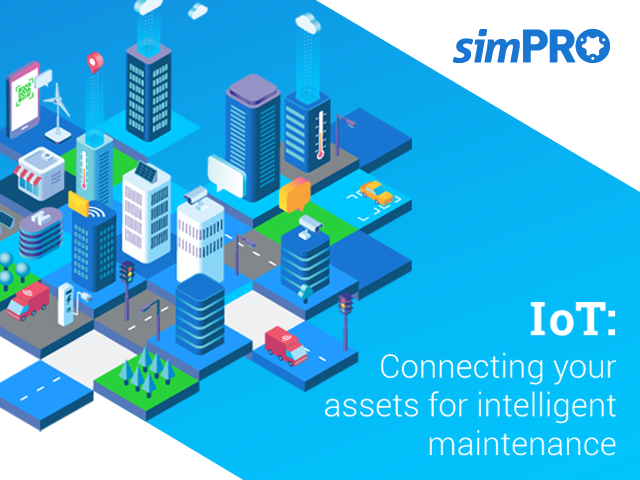
Ten years ago, most people operating in the field service industry were still scribbling quotes, invoices and their daily schedule on the back of any scrap of paper they could find. It was chaotic, inefficient and costly.
Move forward a decade and many, if not the majority, of these businesses, are now utilising cloud-based technologies to manage their businesses, allowing them to quickly move forward with the job they are paid to do. From accounting to job management, reporting and quoting, most administrative jobs can now be done easily and simply.
While many are still adapting to this first wave of change, a new wave is about to hit. The second phase of the field services digital revolution, the Internet of Things (IoT) age, could have an even more profound impact on the way the entire industry operates. For those businesses that embrace the opportunity, IoT will be a pathway to growth and prosperity.
IoT in the field service industry
In its simplest form, IoT refers to the interaction between machines that are connected to the internet. When the digital age first took off, technology was still dependent on physical input; machines still needed a human being at the helm. Today, IoT represents the next stage of the digital evolution. Human-to-machine interaction has been streamlined with an online network that processes data and allows sensors or devices with an internet connection to speak to each other and perform automated functions.

One of the biggest barriers preventing some field service companies from getting on board is a lingering confusion about what IoT means for their business and not taking the time to devise an IoT strategy.
An example of field service businesses using IoT was when Swissport (an aviation company) and Thermacell (a facilities management business) installed Simpro’s IoT hardware and software solutions to improve its facilities management capability at England's Luton Airport. The airport established sensors that monitored the performance of its lounge air conditioners remotely in near real time, and automatically received alerts in response to anomalies.
IoT can also be used in a variety of other cases. For example, IoT can be used to detect the presence of water leaks. If a water leak went unseen (in the case your business wasn’t using IoT), it could lead to costly insurance claims, particularly in high-risk areas. However, with IoT you could quickly detect a leak and fix the problem before it led to further issues.
To adopt or dismiss IoT?
There will always be those who think IoT is nothing more than a gimmick, and an unnecessary disruption in technology development that will only make life and business more difficult. There may be business owners out there who believe that IoT is an extravagant and unjustifiable expense, and that IoT systems will likely die down to serve a niche market.

However, those that accept the disruption will prosper from the adoption.
According to a whitepaper from Worldwide Business Research, “With 68% of field service industry experts predicting a major role for wearable technology in the future, and 53% thinking the same for the full implementation of IoT technology, the potential for remote diagnosis and repair is even greater.”
At this point, being left behind by not embracing IoT is not a risk; it’s a certainty. But why risk it? IoT has the potential to streamline business processes, increase productivity and produce logical and data-driven solutions that consistently help to achieve goals. Field service businesses that adopt IoT are effectively future proofing their operations with strong competitive advantages such as:
- Real-time productivity and monitoring of assets
- Tracking of key maintenance indicators
- Efficient communication
- Real-time insights and tracking of assets
IoT systems can help field service businesses across the spectrum, from ambitious niche startups to globalized industrial companies. Field service businesses are able to use IoT to differentiate themselves from competition, explore new growth opportunities and respond more quickly to customers’ demands and volatile market conditions. It can provide real-time insights into trends, creating opportunities to alter production activity, fine-tune strategies or find alternatives that can save a business cost and time. Essentially, assets that are connected and able to share data allow business owners the luxury of spending less time wondering and more time taking action.
IoT systems are certain to change the way service scheduling is completed and therefore we must all be prepared for new styles of service agreements, scheduling and task-related activity. This means the time is now for businesses to consider the following preparations for a world where IoT makes significant industry contributions.
If you are thinking about implementing IoT in your business, consider the following:
Plan
IoT systems are rapidly changing how we do things but a business still needs to have a clear direction. Identify where your business uses the most resources or requires the most time and effort. Then, pinpoint opportunities where a process can be streamlined, and consider whether these areas could be improved by automated systems and an IoT network.
Find the right solution for your business
While there are many IoT systems on the market, there are few which provide an end-to-end solution. However, Simpro IoT is different. Our 360 degree solution provides businesses with both software and hardware making it easier to not only set up, but also to monitor assets and integrate IoT seamlessly into your operations management. From collecting data to analyzing trends, and automating workflows, Simpro IoT helps field service businesses streamline and enhance asset maintenance.

Simpro provides business management cloud software for the trade and specialty contracting industries including security professionals, plumbers, electricians, HVAC, and others.
To find out more about Simpro IoT, download your FREE copy of our IoT eBook here.